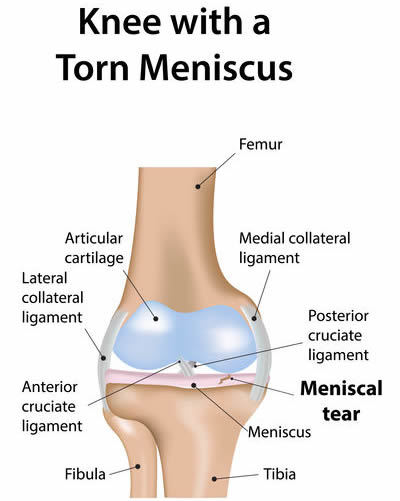Meniscus Surgery

When there is an injury to one, or both, of the rubbery menisci within the knee, it is difficult for your body to repair the damage as most of the meniscus does not have a good blood supply. Many people who have a meniscus injury will have ongoing problems with pain, locking or catching in the knee. As such, your surgeon may recommend surgery to treat the problem. Unfortunately, any injury to the knee increases the risk of developing osteoarthritis in the future, and repairing or removing the damaged meniscus does not change this. However, surgery can be very successful at relieving knee symptoms, often for many years. Usually, this is achieved using arthroscopic (key-hole) surgery.
In areas where the meniscus has a better blood supply, the surgeon may be able to repair it using a combination of surgical techniques. Even if a tear in a meniscus is sewn back together, the tissue will be slow to heal so it will be necessary to protect the knee and avoid sports for up to 3 months after your operation.
More often, the surgeon will recommend removing part of the damaged meniscus. This is often immediately effective at relieving the symptoms of locking or catching and usually, pain has improved significantly within 1-2 weeks of surgery. Full rehabilitation of the knee takes many weeks more and requires strengthening and physiotherapy.
Sometime surgery on the meniscus is the wrong option. If a meniscus has been damaged but is aged and degenerative, surgery to the meniscus will often not work and may make the knee worse. Your surgeon will discuss the proposed surgery and whether it is the right treatment for your knee.
FAQ Risks Rehabilitation Protocol

